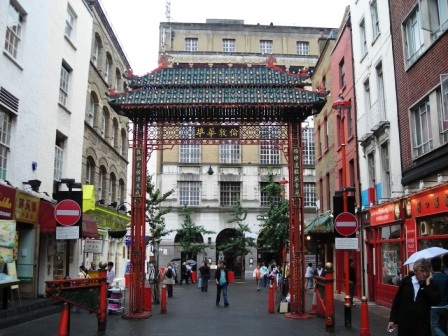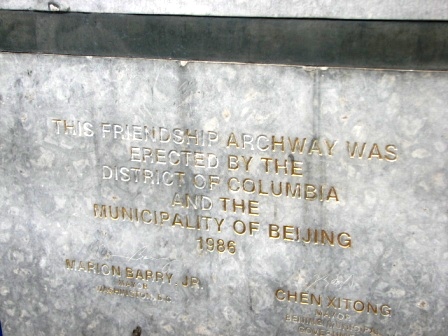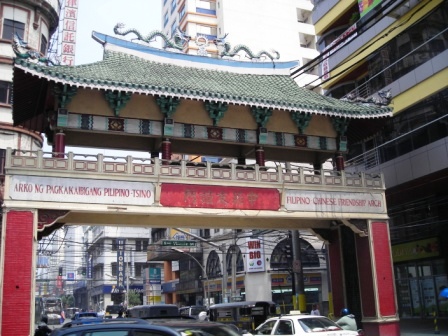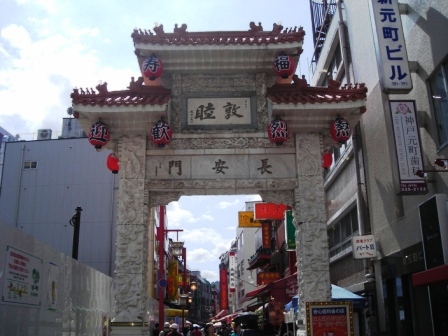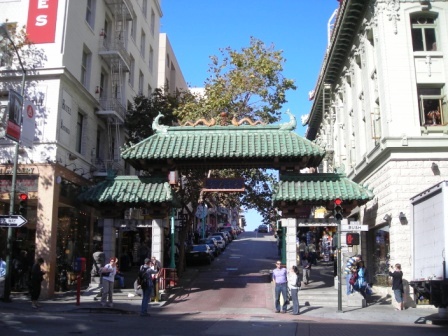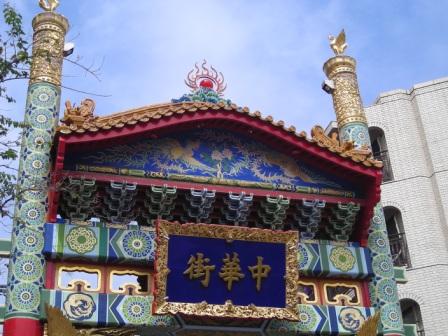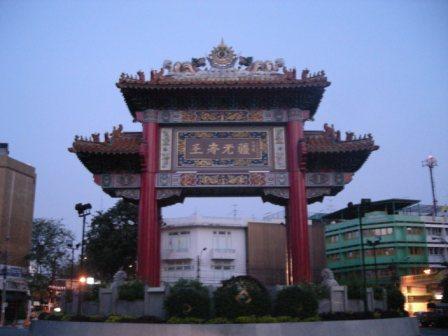
| Home | Chinatowns of the world | Festivals | Culture | Food Culture | History | Countries |
| Chinese Religion | Tours | Sitemap | Documentaries | About | Contact |
Chinese Archways, Paifang, 牌坊Chinese Archways or Paifang are closely associated with Chinatowns. They usually have two or more pillars supporting a roof like structure. More elaborate paifangs can even look like a city gate. Archways are usually found at the borders of Chinatowns and mark the border between the host society and the Chinese community separating the two social and cultural spaces. On the other hand, the inscriptions on the archways link the host society with the Chinese community and that is why archways are often call “Friendship Arches” or “Goodwill Arches” Archways are usually built by the local Chinese community, Chinatown association, and governments or by the local tourism authorities. The archways serve to make the Chinatown look more “Chinatown”, celebrate cultural diversity, demonstrate good relationship between their country and China or Taiwan, to mark an auspicious date or the official designation of an area as Chinatown. In August 2008, Davao Chinatown unveiled 2 archways as part of a larger plan to develop the local Chinatown that will include a Chinese garden and museum. In 1986, a archway was constructed in Washington DC Chinatown to celebrate their friendship with sister city Beijing. At the time of construction, this was the largest archway in the world. Archways, as mentioned above, usually appear at the borders of Chinatown and a Chinatown may have several archways marking various boundaries as well as highlighting important streets or areas in Chinatown. If a Chinatown has several archways, there is usually an official archway that is more elaborate than the rest and serves as the “official” gateway to Chinatown. In Yokohama Chinatown, for example, there are 10 archways and one was specially built to lead visitors to the Guan Gong Temple, a temple dedicated to Guan Yu. Manila Chinatown has a series of small archways along its streets and a more elaborate archway. There is a archway in Singapore Chinatown but it is located inside the Chinatown. The borders of Singapore Chinatown do not have any archways but instead it has the Electronic Road Pricing (ERP) gantries that collect tolls electronically from entering vehicles. We wonder if these ERP gantries might be considered as modern day high tech archways. London Chinatown has miniature lightweight archways due to weight constraints. In 2008, the local authorities are exploring plans to construct a “real” archway to enhance London Chinatown’s attractiveness. This project has caught the attention of Prince Charles famous for calling Chinese leaders “appalling old waxworks” and for titling the 1997 Hong Kong handover as “The Great Chinese Takeaway”. His interest in the project has set observers speculating the political motive behind his involvement. Despite the popularity and close association of archways with Chinatowns, not all Chinatowns have one. These Chinatowns include Oakland Chinatown in USA, Cholon (Ho Chi Minh) Chinatown in Vietnam and Yangon Chinatown in Burma. For whatever reasons archways are created, they come to symbolize Chinatowns and are very popular with tourists and visitors. Most visitors will take a few photos of themselves at the archways. Culturally, archways signal the relationship between the local Chinese community and the host society and recognition of Chinese contribution to local cultural diversity. Since we are discussing Archways in different Chinatowns, we like to invite you to view our list of Chinatown archways. and our archway poll results Related article: Culture and CustomsChinatowns of the world |
|
| Join us on | Youtube | |||
| Copyright © 2007-24 Chinatownology, All Rights Reserved. | ||||

